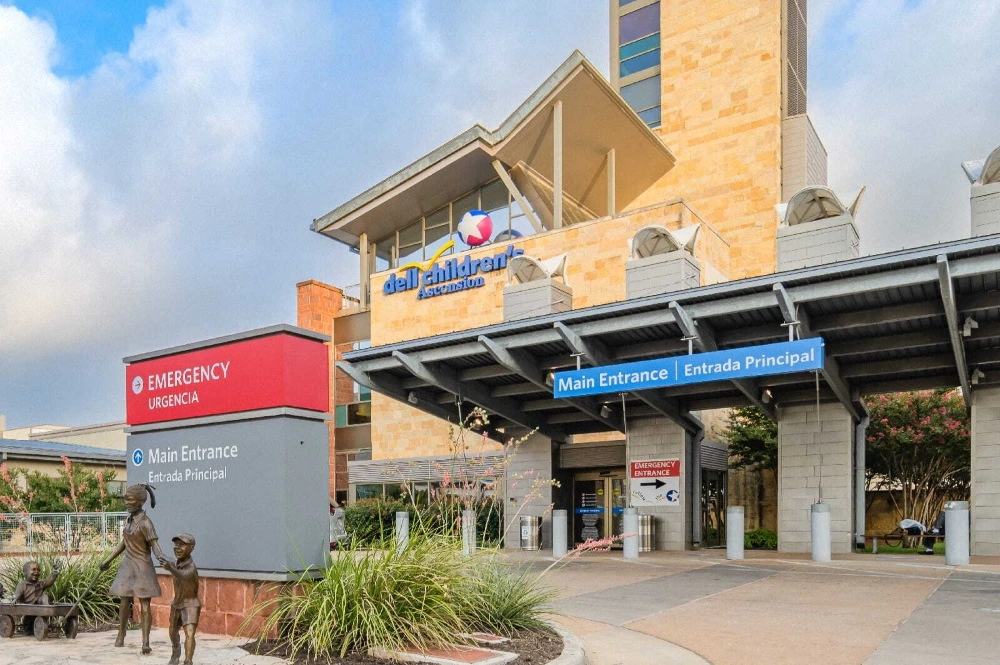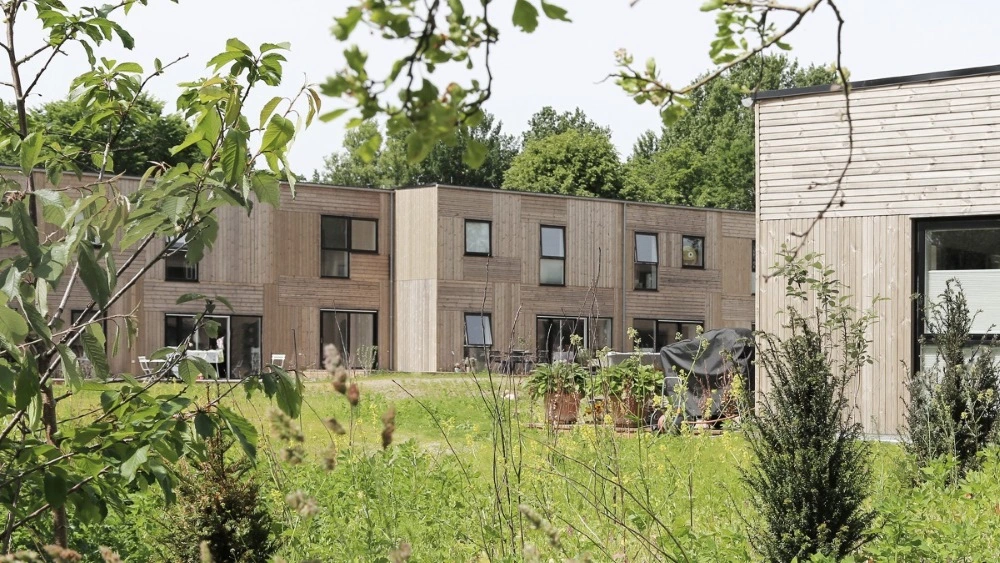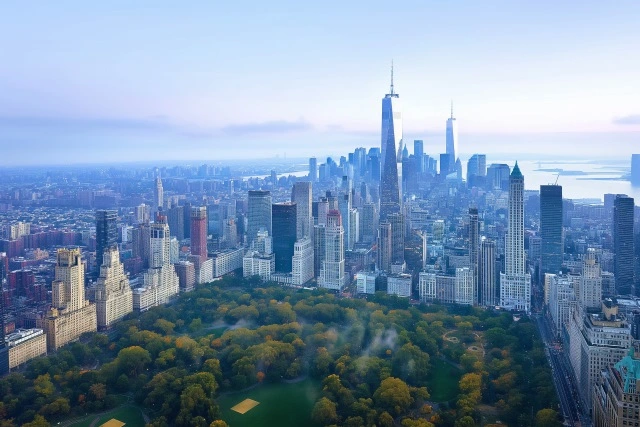Individual well-being and quality of life are often overlooked in the built environment. With investor pressure to maximize tenant occupancy and deliver value for money, the focus on personal health can become de-prioritized. However, with the green movement in construction and facilities management now a more significant factor in building design and operation, the sector is looking for greater social value from real estate portfolios.
A core aspect of ESG green building design is a people-first approach to construction. Architects strive to create spaces that harness healthy communities, especially in residential developments where generations of people will live together.
With the transformational shift in working practices following the COVID-19 pandemic, designing office space around staff needs will be key in modernizing environments for the hybrid work age. But how can commercial real estate (CRE) organizations invest in healthier buildings to ensure that their portfolios are future-proofed against the needs of buildings’ occupants?
ESG goals: Aligning health with sustainability
The design and build of ESG green buildings require more from developers and contractors than procuring an environmentally friendly structure. Sustainable design is all about creating spaces that promote physical and mental well-being, prioritizing the health and comfort of a building’s occupants.
This is a core part of the UN’s Sustainable Development Goals (SDGs), and we know that almost all organizations rely on them as part of their sustainability reporting. A World Business Council for Sustainable Development study found that 94% of its members benchmarked their progress against SDGs in 2022.
Developers and investors will also need to align health with sustainability to secure environmental benchmarking certifications. The LEED certification process, for example, is dependent on structures that promote quality of life; the U.S. Green Building Council has developed its latest framework (v5) around healthy buildings.
Cost-benefit analysis of healthy buildings
While great strides have been made in the built environment towards healthier buildings, the industry is still not on track to meet the SDGs. The commercial reality is that social and economic value will need to go hand in hand for the sector at large to fully embrace sustainable development.
Cost-benefit analysis of commercial office space shows that rents increase by 4.4% to 7.7% for facilities in healthy buildings across major U.S. cities. The research by the Real Estate Innovation Lab uses public databases from Fitwel and WELL, two of the leading building wellness certification providers.
Successful examples
Perhaps the most important building category in need of high-spec healthy building design is a hospital. The Dell Children’s Medical Center in Austin, Texas is the world’s first LEED platinum-certified healthcare facility and delivers world-beating pediatric care for families across the Lone Star state.
 Photo: Ascension
Photo: Ascension
Its design harnesses natural light as much as possible. Its HVAC system has been optimized to cut energy consumption by 40% while improving air quality in the building. The hospital has also incorporated green space into the design, with external gardens landscaped around it to promote recovery.
Housing is another area where buildings should promote healthy living. In Denmark, 7% of the population lives in co-operative housing, and the Stansvolt housing project in Copenhagen is a prime example of how these shared communities can be built with sustainability in mind. Its carbon reduction scheme is five years ahead of Danish law, and its open-plan design creates a sense of community while promoting biodiversity within the complex.
 Photo: URBAN POWER
Photo: URBAN POWER
Understanding the impact of air quality in buildings on human health
According to the U.S. Environmental Protection Agency, humans spend as much as 90% of their time indoors, so it’s vitally important that the built environment prioritizes structures that support a good quality of life.
The World Health Organization (WHO) claims that household air pollution is responsible for 3.2 million deaths per year; exposure can lead to long-term respiratory diseases, heart disease, strokes, and lung cancer. Without adequate ventilation systems, many homes that use inefficient cooking stoves and solid fuels for heating and cooking are at greater risk.
Retrofitting old buildings to improve air quality
While modern buildings are designed with optimized building management systems (BMS) that ventilate all rooms efficiently, retrofitting HVAC systems to improve air quality in older buildings can often be challenging.
With decades and (often) centuries of dust and other volatile organic compounds (VOCs), making historic buildings safe for human inhabitants requires careful planning. However, emerging technologies such as air quality sensors, HEPA filters, and advanced retrofit HVAC systems can reinvigorate these aging establishments.
Impact on mental health
A hidden consequence of poor indoor quality is its effect on our mental health. According to a study in the British Journal of Psychology, high levels of air pollution can lead to increased depression and anxiety symptoms, and research also links it to dementia and Alzheimer’s disease.
Kam Bhui, an Oxford University professor who led the study, said, “Air pollution and mental health are both major challenges that the world must grapple with now and for years to come. This makes this area of research a vital public health priority.”
Innovation and Healthier Structures
The green movement is well and truly alive within the building sector. We are more aware as an industry of the consequences of sustainable building design and the effect it can have on our health and wellbeing.
For the built environment to continue to make progress against its own ESG goals and transform the quality of building stock in our societies, we must continue to embrace new innovations that enhance healthy structures.
Architects are harnessing innovation in building materials, such as flexible VOC-absorbing drywall, which can eliminate 70% of indoor air pollution. Plant-based materials such as sustainable reinforced timber are also linked to improved air quality while reducing a structure’s carbon footprint.
Certification for healthy buildings
If your organization is seeking an advanced form of environmental benchmarking, such as LEED or GRESB certification, your portfolio will need to ultimately demonstrate that it meets the highest standards of care for its occupants.
ESG investing is more than just sustainable design; creating meaningful social value across a portfolio will be necessary to achieve high certification standards across a building network. Building certifications such as Fitwel and WELL also set high industry standards for building wellness certification, redefining the value these certifications can bring to a portfolio.
Automate your certification with our app Certify
Whether your commercial real estate organization is seeking renewal on its ESG certification benchmarks or looking to find ways to harness data to improve a building’s quality of life for occupants, ProptechOS’s Certify technology seamlessly automates building certification renewals, making it easier for your business to update to the latest standards.
Not only that, it can connect to digital twins and various components of an Internet of Things (IoT) infrastructure to present a full picture of a building’s operational efficiency, allowing facilities managers to optimize systems without the need for expensive retrofits.
Your CRE business can sign up for a free trial today.

Per Karlberg
Per Karlberg, a distinguished technology executive, demonstrates deep expertise in the nexus of real estate, technology, and ESG. Holding advanced degrees from Lund University, and with key roles as CEO of our company and Co-Founder of ProptechOS, he has shaped the proptech field through significant contributions to real estate technology advancements. His instrumental work in co-authoring “The realestatecore ontology” has facilitated digital transformation and ESG breakthroughs in the real estate sector.
Read his full bio and information here.

